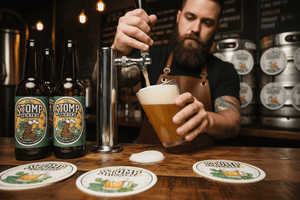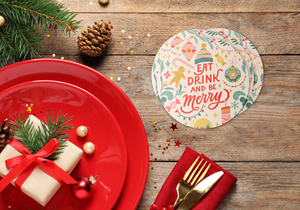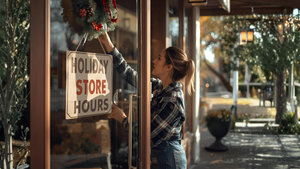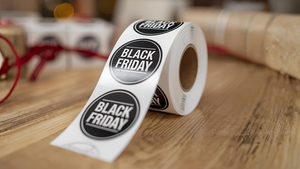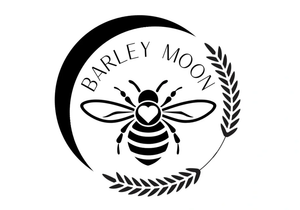What's in a Label: TTB Wine Label Requirements Explained

Making the perfect bottle of wine takes the right grapes, a little bit of patience, and a whole lot of fermentation magic. But there’s an essential ingredient in the wine-making process that people tend to overlook — the label!
The Alcohol and Tobacco Tax and Trade Bureau (TTB) provides extensive wine label requirements that can be tricky to navigate. But fret not! Stomp is here to uncork the complexities of the TTB wine label requirements so you can label your liquid art with confidence and compliance.
Wine and COLA: An Unlikely Combination
You most likely need a Certificate of Label Approval (COLA — not to get confused with a can of soda!) from the TTB before you can sell your wine. If you’re selling your adult beverage in another state, a COLA is a must. If you’re selling your wine within the state it’s made, you may not need the official stamp. However, you’ll likely need to include most of the information that’s mandated at a federal level regardless of where you sell your wine.
So, why bother with COLA if it’s not always required? Simple. With COLA, you can maintain compliance no matter your location and expand your wine’s reach to the vast vineyards of online sales. It’s like getting a passport for your wine — opening up a world of possibilities.
COLA Requirements for Wine Explained
Ready to uncork the details of COLA? The TTB provides a comprehensive checklist of information required for wine labels. In a nutshell, your label must have the following information:
- Grape varietal: Are you making a smooth sauvignon blanc or a delicately balanced pinot noir? Make sure your customers know what kind of grape goodness they’re getting in your bottle!
- Brand name: Make your brand name memorable — it’s your wine's identity. And just as importantly, make sure it’s legible on your label and that it matches the “Brand Name” field on your COLA application.
- Class and designation: You need to include the class and designation of your wine on the label. Are you selling table wine or dessert wine? This matters, especially since there are specific requirements for wine relating to alcohol content. For example, table wines have an alcohol content between 7-14%, while dessert wines play in the 14%-24% range.
- Winery details: Your label must also include the name and address of your winery, along with fermenting and bottling locations.
- Net contents: How much wine is in there? Your customers will want to know. You can include this info on the label or mark it on the bottle itself.
- Alcohol content: Including your wine’s alcohol content by volume is an absolute must. How else will your carefully sipping customers know how strong their drink is?
- State and local requirements: Don’t forget to check your local regulations. Depending on where you’re based or where you’re planning to sell your wares, your local or state laws might have a say in what information you include on your wine labels.

Regulations for Wine Label Design
Now that we’ve covered the essential info for your label, let’s take a closer look at some specific TTB regulations for wine label design — starting with the size of your text. For those cozy, smaller bottles of a half pint or less, your text should stand at a minimum of 1 mm per character. If you’re dealing with containers larger than half a pint, those letters need to grow to at least 2 mm per character.
Next up: clarity and contrast. The TTB requires all text on a wine label to be legible under ordinary conditions. Make your text boldly stand out against the label’s background, ensuring that nothing is hidden or hard to read. It’s like how a sommelier would present a wine’s qualities. No blending into the background here!
And then, the all-important health warnings. They’re not just suggestions; they're requirements. Picture your label’s health warnings as the bold, unmissable signposts on your wine’s journey to compliance.
The mandatory government warning about alcohol consumption and pregnancy, as well as the effects on one’s ability to drive or operate machinery, must be worded exactly as specified. And if your wine contains specific ingredients like FD&C Yellow #5, Saccharin, Sulfites, or Aspartame, make sure their respective warnings are just as clear and prominent. Take a closer look at the TTB requirements to ensure your warnings are phrased correctly.
Navigating TTB wine label requirements may feel daunting — like ordering a bottle from a 10-page-long wine list – but understanding and satisfying these requirements is essential to creating a compliant and informative label.

Design Your Wine Label With Confidence
With the TTB wine label requirements in your cellar, you're ready to design a label that's both captivating and compliant. And remember, your label is the first impression your wine makes on a potential customer — so make it count!
If you’re seeking design inspiration, look no further. Check out our blog post “How to Create Your Own Wine Label” for tips and tricks to help you create an awesome label with an unforgettable design.
Design Your Wine Bottle Label With Stomp
As we wrap up this vineyard tour of knowledge, remember that your compliance with TTB wine label requirements is just as important as the product itself. So make sure every TTB box is ticked, and get ready to unleash your creativity! With Stomp’s easy-to-use design tools, you can marry compliance with enchanting design for an A+ wine label.
Get in touch with Stomp and make your wine labels something to toast about!
- Nashira Edmiston

